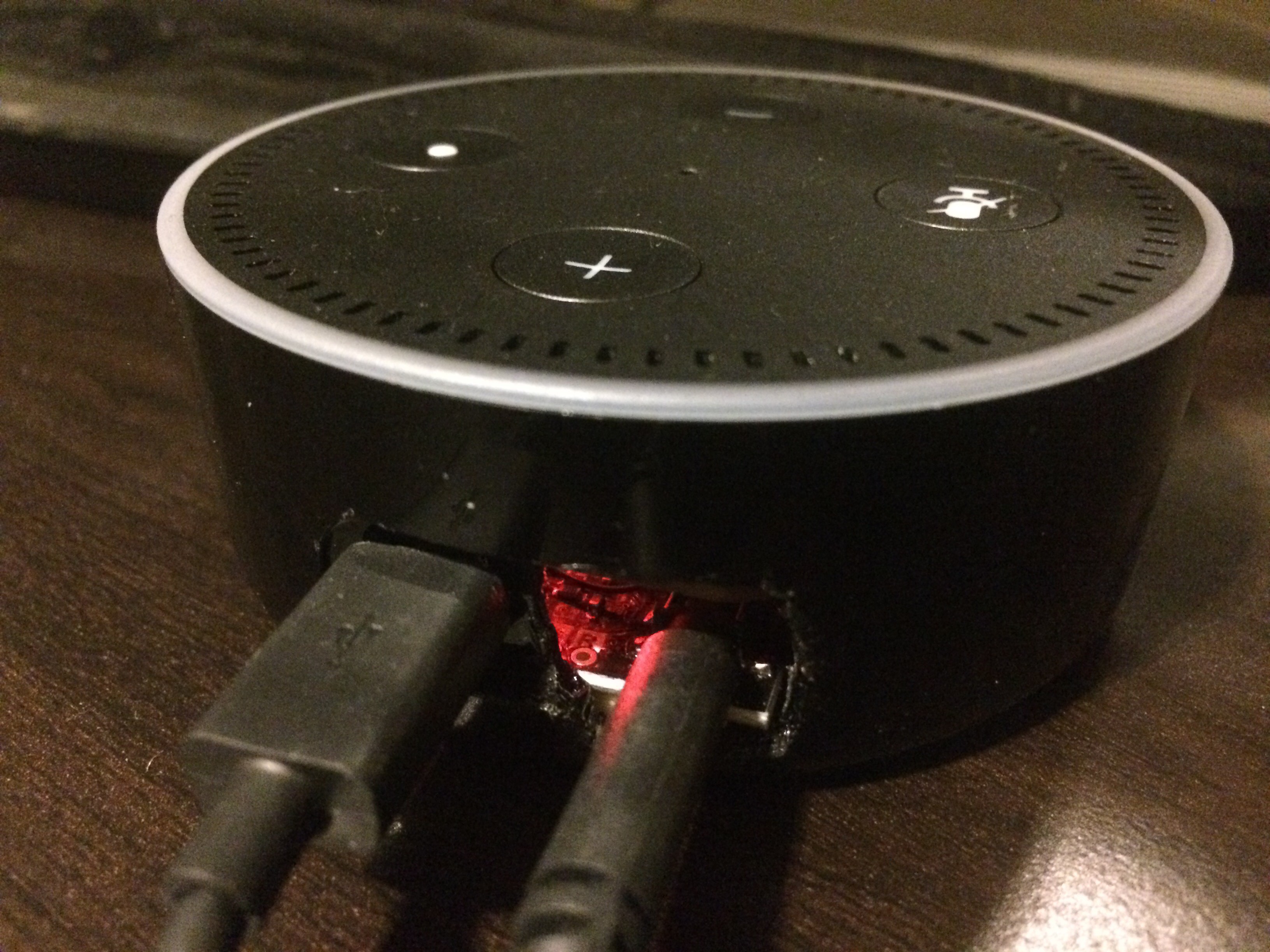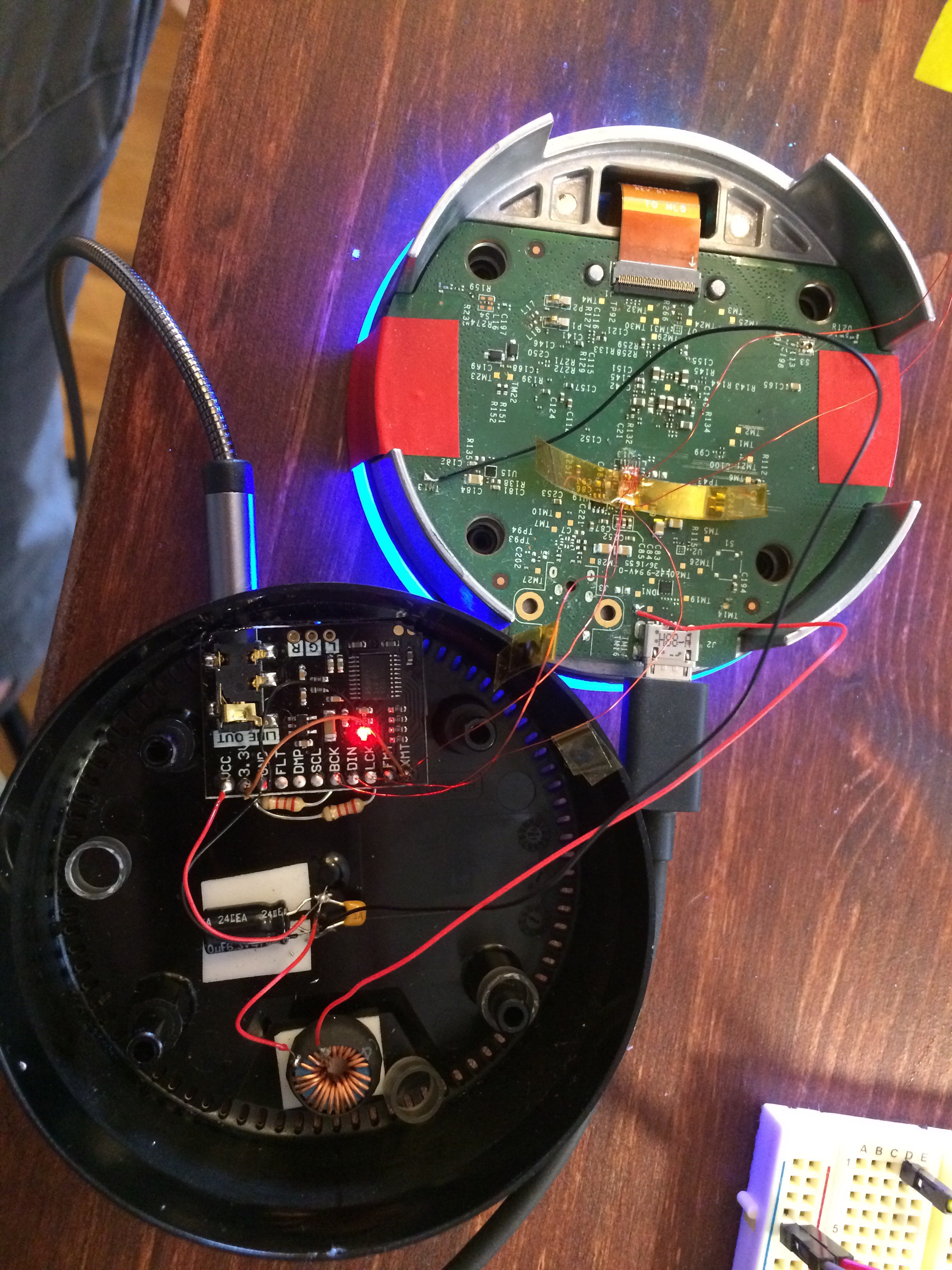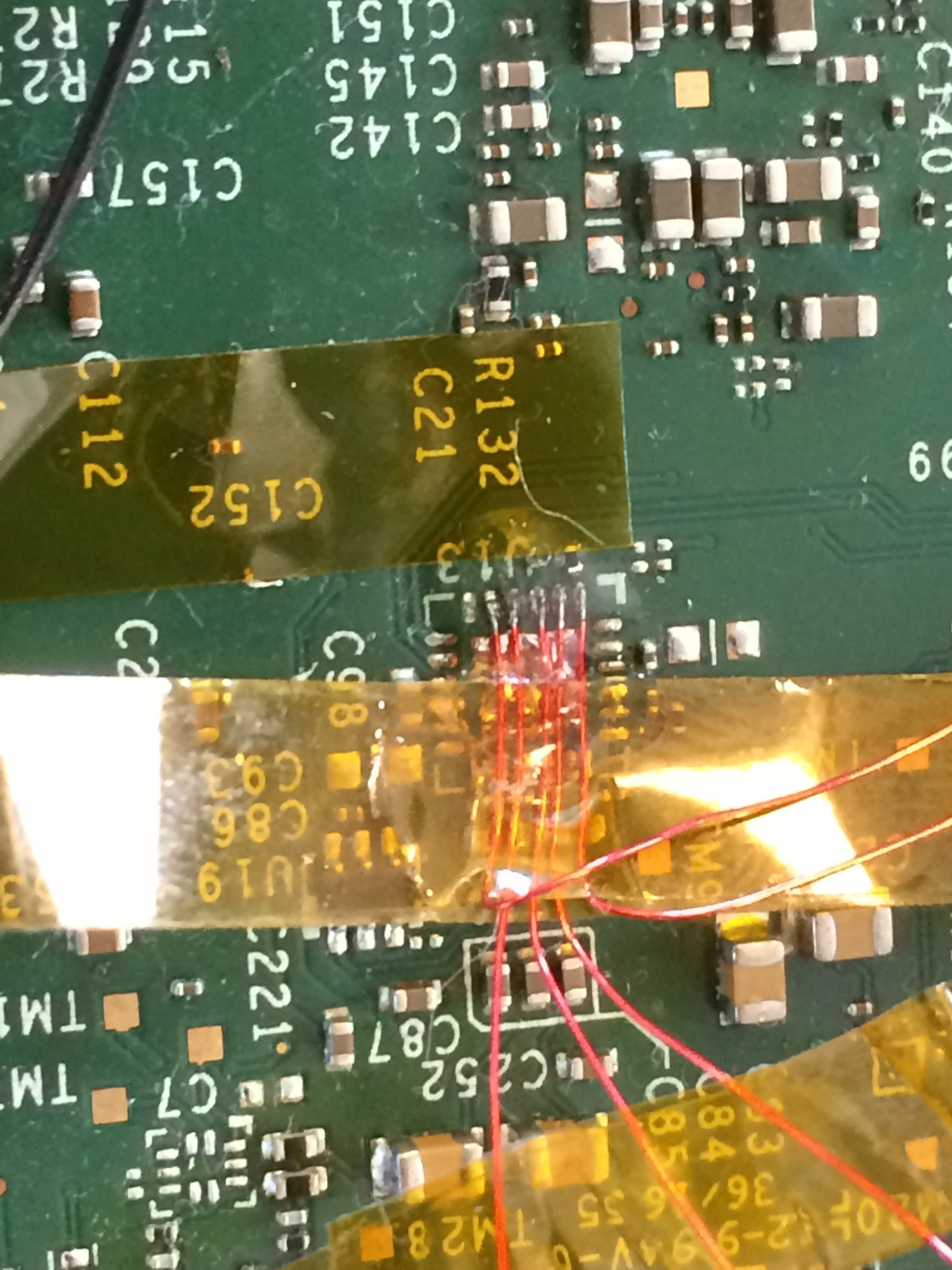-
A Little Progress
05/18/2018 at 03:44 • 0 commentsSmall update (still working on this!!):
Since the last update a few things have happened. I ordered the sainsmart dac based on the pcm5122 as mentioned previously, and (I think) proceeded to kill it. I have a new 5122 chip on the way. In the meantime, I have redone the i2s lines to the pcm5122, beefed up the power supply a bit with a little LC circuit made from parts laying around, and put it all inside the case (sans internal speaker). Even this little 5102 dac blows the stock dac out of the water... For less than five bucks! Will be very interested to see how the 5122 with vastly better power supply and analog components will do. The change will be small for sure, but maybe noticeable. We'll see if it's worth 5x the price of the little 5102 board.
Also ordered a WM8804 transceiver board, as the eventual goal is to get a digital signal out to a receiver or dedicated dac. It will be a little trickier as it requires a mclk signal, and I haven't yet figured out exactly what frequencies the Echo's various clocks are at. (If anyone has a decent scope and wants to poke around in their echo, let me know!)
A few photos:
![]()
![]()
![]()
-
Proof of Concept
11/10/2017 at 01:55 • 0 commentsI took the leap! Today I removed the TI DAC3203 IC (datasheet here) from the Echo's motherboard and broke out the I2S lines to a cheap eBay PCM5102A DAC (datasheet here) board. Aaaaand after a little fiddling with the DAC... success! It works beautifully. Demo video below.
To-Do:
- Try out a couple other better DACs such as the Sainsmart HI-FI DAC meant for a Raspberry Pi
- Test implementation of an I2S to S/PDIF conversion IC (this one) to hook the Echo Dot up to a digital home theater receiver or optical input DAC.
- Re-instate the Echo's internal speaker, and somehow make it less clunky to switch between using the internal speaker and the audio output. I'd love to be able to somehow detect the status of the amplifier (hooked up/powered on or off) and switch the outputs with a microcontroller, but it seems like the best solution as of now is to voice-control the switch using an esp8266 configured as an alexa "smart home" device. Looking for suggestions here.
- manufacture a board to add a digital output, and 3D-print a larger volume bottom shell to house the additional board plus the internal speaker.
- ???
Hi-Fi Digital Audio from the Echo Dot
Hacking a digital audio output (i2s and/or optical) onto an Amazon Echo Dot V2
 Matt
Matt


